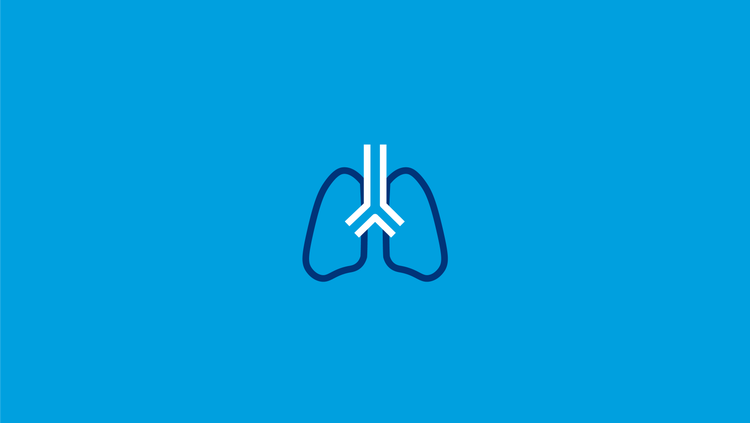Diagnosis of PAH
Pulmonary arterial hypertension (PAH) is a progressive and life-limiting condition, making early detection and treatment vital.[1][2] The symptoms are often non-specific and the condition is frequently confused for other more common diseases.[3]
This page will explore and investigate the options to diagnose PAH, describing the European Society of Cardiology (ESC)/European Respiratory Society (ERS) diagnostic algorithm and the different investigations that can help diagnosis, including echo and right heart catheterisation (RHC).
This page is intended for healthcare providers. Are you a patient? Visit PH-human to find more information about PAH.
On this page
Diagnosis of PAH
Early diagnosis of PAH and timely therapeutic intervention is associated with improved patient outcomes. However, early diagnosis of PAH is often challenging due to the non-specific nature of early symptoms, among other factors.[4] See below for detailed guidance on the diagnostic process for PAH.[5]
2022 ESC/ERS diagnostic algorithm
PAH should be considered in the differential diagnosis of patients presenting with a constellation of symptoms, including exertional dyspnoea, syncope, angina and/or progressive limitation of exercise capacity. This is of particular concern in patients without apparent risk factors or symptoms/signs of common cardiovascular and respiratory disorders.[5]
Special awareness should be directed towards patients with associated conditions and/or risk factors for the development of PAH, including:[5]
• Family history
• Connective tissue disease
• Congenital heart disease
• HIV infection
• Portal hypertension
• A history of drug or toxin intake known to induce PAH
It is recommended for patients with suspected PAH to undergo further investigation at a specialist centre, including RHC to definitively confirm the presence or absence of PAH.[5]
Diagnostic features of patients with PAH, from the 2022 ESC/ERS guidelines[5]
Adapted from Humbert et al. 2022[5]
Clinical history, symptoms, signs, electrocardiograms (ECG), chest radiographs, echocardiograms, pulmonary function tests (PFT), computed tomography (CT) of the chest and ventilation/perfusion (V/Q) scans are all necessary to exclude the diagnosis of PAH due to left heart disease or lung disease, or chronic thromboembolic pulmonary hypertension (CTEPH):[5]
Investigation of PAH
Electrocardiography
ECGs may provide suggestive or supportive evidence of PH by demonstrating right ventricular (RV) hypertrophy, RV strain, right axis deviation, P pulmonale and QTc prolongation.[5]
Echocardiography (echo)
An echo provides information on right heart structure and function, and should always be performed in cases of suspected PH.[5]
Chest radiography
Chest radiographs may show evidence of right atrium, right ventricle and pulmonary artery enlargement. They may also show signs of the underlying disease (e.g. lung disease).[5]
Pulmonary function test
Pulmonary function tests and arterial blood gas samples may help identify the contribution of underlying airway or parenchymal lung disease.[5]
High-resolution computed tomography
CT imaging can provide information such as pulmonary arterial diameter and clues as to the type of PAH (e.g. cardiac abnormalities). High-resolution CT provides detailed views of the lung parenchyma, helping determine the cause of PH when there are features of parenchymal lung disease.[5]
V/Q scan
A V/Q lung scan is used to exclude CTEPH. Where there is evidence of multiple segmental perfusion defects, a diagnosis of CTEPH should be suspected. The final diagnosis of CTEPH requires CT pulmonary angiography and RHC.[5]
The role of echo and RHC
Echocardiography (echo) is a key screening tool in the diagnosis of PAH, while RHC is the gold standard for confirming the diagnosis of PAH.[6][7]
Echo assessment of PAH
Echo should always be performed when PAH is suspected. It may be used to infer a diagnosis of PAH in patients when multiple echo parameters consistent with a diagnosis of PAH are met.[5]
Echo can provide an estimate of the RV systolic pressure, which is equivalent to the systolic pulmonary arterial pressure (sPAP). Tricuspid regurgitation velocity (TRV) and the presence of other echocardiographic signs should be combined to estimate the probability of PAH. Ensuring adequate right heart assessment assists not only in the diagnosis of PAH but also in monitoring disease progression and/or treatment response.[5]
Echocardiographic probability of PAH
Based on echocardiographic parameters (peak TRV and the presence of other echocardiographic PH signs), this table gives the echocardiographic probability (low, intermediate or high) of PH.[5]
Adapted from Humbert et al. 2022[5]
Echocardiographic signs of PAH
This table describes the echocardiographic signs suggestive of PH used to assess the probability of PH.[5]
Adapted from Humbert et al. 2022[5]
*Echocardiographic signs from at least two different categories (A/B/C) from the list should be present to alter the level of echocardiographic probability of PH.[5]
Right heart catheterisation
RHC is required for the definitive diagnosis of PAH. RHC involves directing a catheter into the right side of the heart and the pulmonary arteries to assess cardiopulmonary haemodynamics.[5][8]
Diagnostic criteria of PAH measured by RHC:[5]
• Mean pulmonary arterial pressure >20 mmHg
• Pulmonary arterial wedge pressure ≤15 mmHg
• Pulmonary vascular resistance >2 Wood units
Continue reading

Learn more about PAH, including its clinical classification and various subtypes.
Find out about the different screening strategies used in at-risk patients. Patients with suspected PAH should be referred to a specialist centre for further investigation.
ABG, arterial blood gas; CT, computed tomography; CTEPH, chronic thromboembolic pulmonary hypertension; DLCO, carbon monoxide diffusing capacity; ECG, electrocardiogram; EOV, exercise oscillatory ventilation; ERS, European Respiratory Society; ESC, European Society of Cardiology; HIV, human immunodeficiency virus; HPAH, heritable pulmonary arterial hypertension; IPAH, idiopathic pulmonary arterial hypertension; LVEI, left ventricle eccentricity index; PaCO2, partial pressure of arterial carbon dioxide; PAH, pulmonary arterial hypertension; PaO2, partial pressure of arterial oxygen; PETCO2, end-tidal partial pressure of carbon dioxide; PFT, pulmonary function test; PH, pulmonary hypertension; PVOD, pulmonary veno-occlusive disease; RHC, right heart catheterisation; RV, right ventricular; RVOT AT, right ventricular outflow tract acceleration time; sPAP, systolic pulmonary arterial pressure; SPECT, single-photon emission computed tomography; SSc, systemic sclerosis; TAPSE, tricuspid annular plane systolic excursion; TRV, tricuspid regurgitation velocity; VE/VCO2, ventilatory equivalent for carbon dioxide; V/Q, ventilation/perfusion